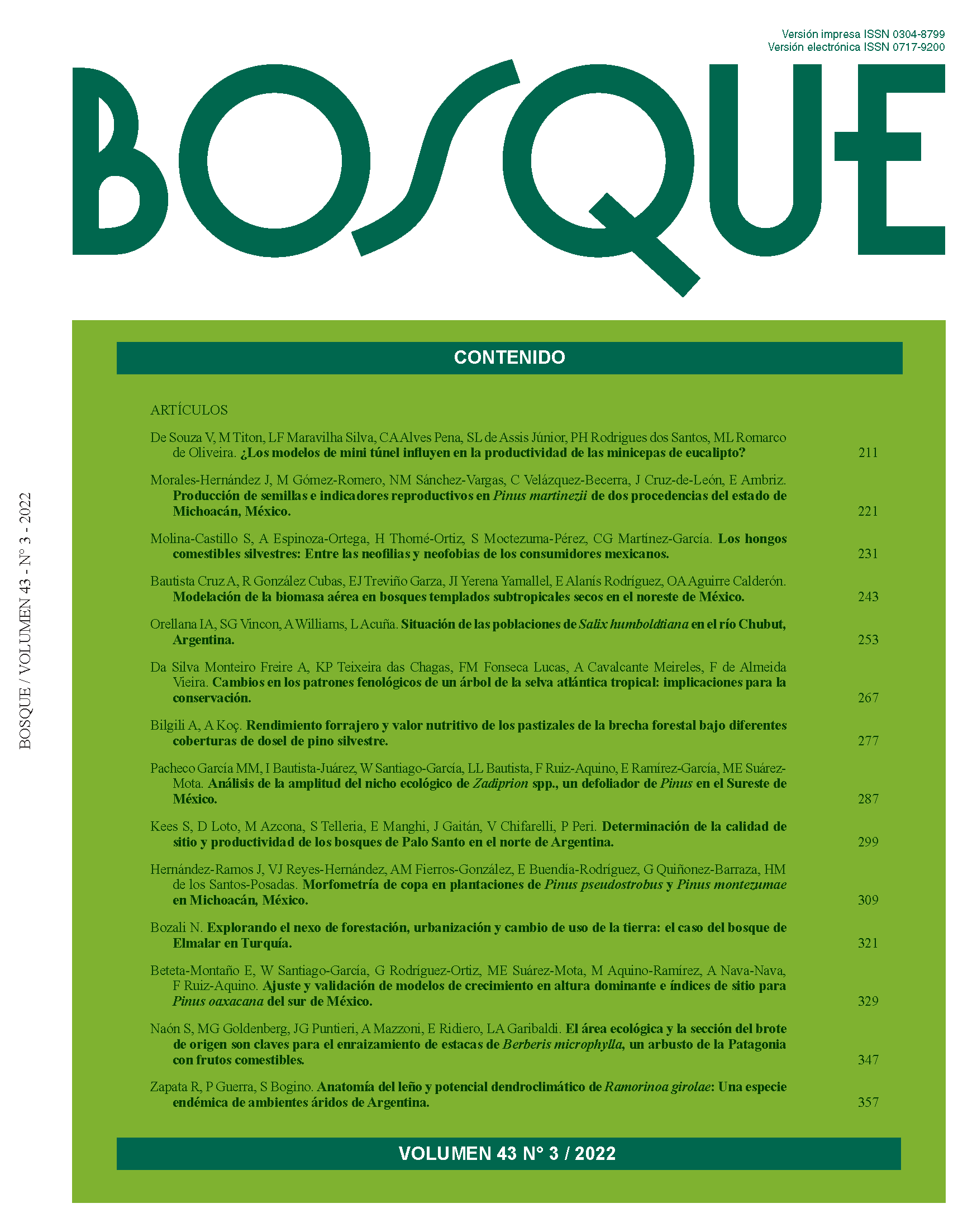Determination of site quality and productivity of Palo Santo forests in northern Argentina
Main Article Content
Abstract
The general objective of this study was to provide information regarding the productivity and site quality of Palo Santo forests in their Argentinean distribution area in order to establish guidelines for sustainable management and use. We used data taken from 482 plots as part of national, regional and local forest inventories in northern Argentina, carried out in native forests within aboriginal and peasant community tenures and management plans. Basal area, stem volume and dominant height of Palo Santo trees were used to determine site quality class. This was correlated to forest structure by using a classification mosaic from Landsat satellite images. A sustainable cutting cycle duration and harvest intensity for Palo Santo forests were calculated according to their site quality. The results suggest that the current stocks of Palo Santo are sufficient to continue with its sustainable use without compromising its long-term availability. This information is useful for decision makers and defines the potential of the species to provide resources to regional economies and provincial productive development.

